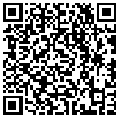EX520v Setup Guide
Model: EX520v
Welcome! Let’s get your router up and running together.
This guide makes setup simple for everyone, covering helpful accessibility resources, what’s in the box, how it looks, and where to begin.
Our Aginet app and web management page also offer accessibility features, such as increasing page contrast, switching to landscape mode and increasing font size. You can enable them during setup to make it much easier to set up your device and adjust settings! For more accessibility guidance, refer to Accessibility Support.
Note: For some models, Accessibility features will be supported by subsequent firmware upgrades.
Now, ready to explore your router and get connected?
Step 1. Learn About Your Router
This section introduces the router's package contents and appearance, including its ports, buttons, and product label.
1. Unpack Your Router
Your package includes: a router, a power adapter, an Ethernet cable, a RJ-11 phone cable and installation guides.
Power Adapter: A block-shaped charger with a cord. Plug it into the router’s power port to turn it on.
Ethernet Cable: A thick cable with plastic connectors at both ends. Each connector has a small clip to hold it in place. To use the cable, insert one end to the WAN port on your router until you hear or feel a click and the other end to an Ethernet outlet or a modem. To unplug it, you can press the click and pull it out.
RJ-11 phone cable: a thin, flat, or slightly rounded cable with a smaller, rectangular connector on each end. To use this cable, insert one end to the phone port on your router until you hear or feel a click and the other end to your telephone’ TEL port on the back panel. To unplug it, you can press the click and pull it out.
2. Appearance
The router is a rectangular shape, similar to a large, thick book designed to sit on a flat surface, such as a table or shelf. Its top and bottom are flat trapezoids, and the larger side is the bottom with two nearly square plastic footpads on both edges. It has no external antennas.
First, with its footpads facing down, place the router on a flat surface.
Next, face directly the side that has recessed square opening ports and buttons aligned in a row. This side is the back panel. These buttons and ports are arranged from left to right as follows:
- USB 3.0 Port: A small, rectangular slot. Connect USB storage devices here.
- Phone Port: A nearly square opening. For connecting your analog phone to the VoIP router.
- WAN Port: The first of the four larger, nearly square ports. Connects to your modem or Ethernet outlet.
- Three LAN Ports: The second to fourth nearly square ports in a row. Use to connect additional wired devices.
- Wi-Fi Button: A small, round, protruding button. Press and hold the button for more than 2 seconds, then release the button to turn on or off the wireless function of your router.
- WPS Button: A small round protruding button. Press the button, and within 2 minutes press the WPS button on your client to start the WPS process.
- Power Port: A round opening port with a metal pin in the middle. Plug in the power adapter to supply power.
- Power On/Off Button: A round, protruding button. Press it to turn the router on or off. The button is pressed down a little when the router is powered on and pops up when powered off.
On the bottom of the router, there is a recessed label. This label includes: the router’s default network name (SSID), the MAC address, and a QR code for scanning to connect to the default Wi-Fi.
Step 2. Set Up Your Router
1. Position your router with its bottom facing down. Make sure that the router is within reach of an AC power outlet and near Ethernet cables for wired devices.
2. Scan the QR code below to download the Aginet app for iOS or Android, or scan the QR code on the Quick Setup Guide for the Aginet app. The app will walk you through setup.
Note: Please remain online (Wi-Fi or mobile data) throughout the app download and login steps.

Tip: You can also cable and set up your router with a web browser via http://tplinkwifi.net or http://192.168.0.1. For detailed information, please refer to the router’s quick installation guide or user guide.
Support
For technical support, replacement services, user guides, and other information about your product model, please visit https://www.tp-link.com/support/